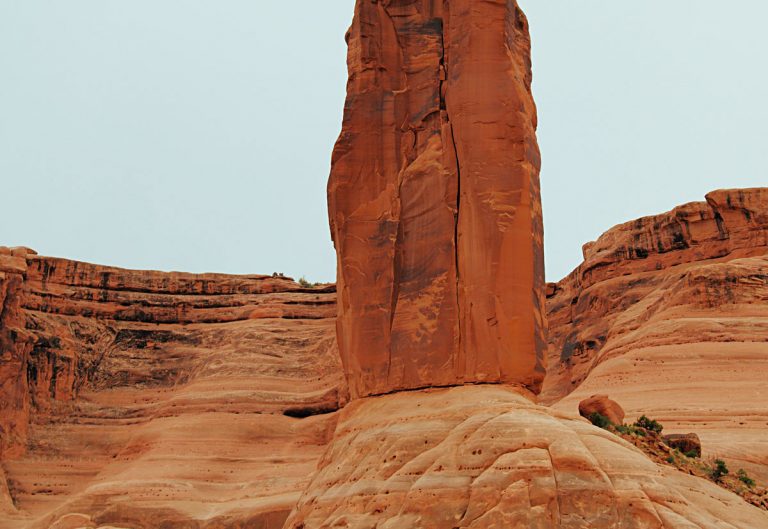Mysterious monolith appearances: aliens or art? This is what we know

Just when we thought 2020 couldn’t get any more alienesque, not one, or two, but three massive metal monoliths were discovered in the middle of nowhere. I thought that all the surprise factor had been used up this year, well I was wrong. Is this the doing of one clever artist (whom I would very much like to meet if he would be so kind as to raise his hand)? Or, are these mysterious appearances literally from out of this world? This is what we know so far.
The first of these mysterious three metre-tall structures was spotted by Bret Hutchings, a helicopter pilot who was helping count sheep in the remote area of the Utah desert. “That’s been about the strangest thing that I’ve come across out there in all my years of flying,” he told local news channel KSL TV.
After the reported sighting, Utah’s Aero Bureau of the Department of Public Safety released a photo of the object on its Instagram but didn’t reveal its exact location. The post inevitably went viral, and people began their independent investigations and speculations which led to coordinates being circulated on Reddit, with absolutely no certainty on their accuracy.
More claims revealed that overviews of Google Earth show the monolith had been there for years before this recent discovery. Before quite enough people could be satisfied with its existence, poof, the ‘thing’ disappeared, leaving no trace of it to be found. Conspiracy theorists stuck their naughty little heads in too, presenting an idea that the structure had been placed, and then removed by aliens.
But, much to their bad luck, a photographer named Ross Bernards and his friend Michael James Newlands revealed photographs of a group of four men toppling it down and taking off with it.
“It must have been 10 or 15 minutes at most for them to knock over the monolith and pull it out,” Newlands told the New York Times. “We didn’t know who they were, and we were not going to do anything to stop them.” Now, I’m not sure about you, but this is exactly when I would have gotten involved and done anything to quench my curiosity, had I been there myself with an accomplice like Bernards did.
Their answer as to why they didn’t stop the men from taking the structure away was because they didn’t want to stop them taking it away. Bernards shared in an Instagram post that “it’s best to leave the art in the wild to her” after more and more cars and tourists began flooding the delicate landscape. This much I agree with, but a little ‘hey guys what’s that you got there, need a hand getting it out of here?’ wouldn’t hurt.
Just a week after, a local newspaper in the small town of Atascadero on the central Californian coast reported that another silvery column had been found atop Pine mountain, but unlike its sturdy and firm sibling in Utah, this one was apparently a little wobbly.
While the world was fumbling over Utah and Atascadero, Romania’s mountainous Neamt county had its time to shine as yet another metal structure popped up out of who-says nowhere. “The 2.8 metre tall structure disappeared overnight as quietly as it was erected last week,” Romanian journalist Robert Iosub told Reuters. “An unidentified person, apparently a bad local welder, made it … now all that remains is just a small hole covered by rocky soil.” I’m just going to add here that Sky News reported it to be 4 metres, which is rather a lot larger than 2.8 metres.
And so, the mystery continues, but if the original monolith in Utah was planted with inspiration from the science fiction novel 2001: A Space Odyssey, where a monolith appears on Earth and gives wisdom to a tribe of apes, it has left not much wisdom, but instead much folly among us, and much amusement on my part.
So the monolith disappeared from Utah and then turned up in Romania. If the “Aliens” like equilateral triangles it should pop up in Greenland next... pic.twitter.com/qvuM1t31rG
— Mothra P.I. (@Hardywolf359) December 1, 2020




